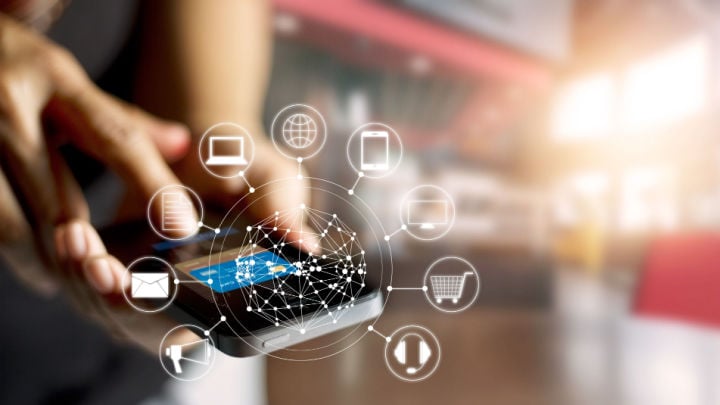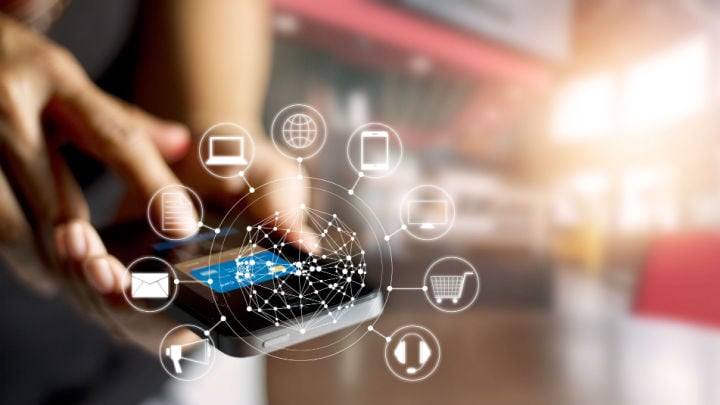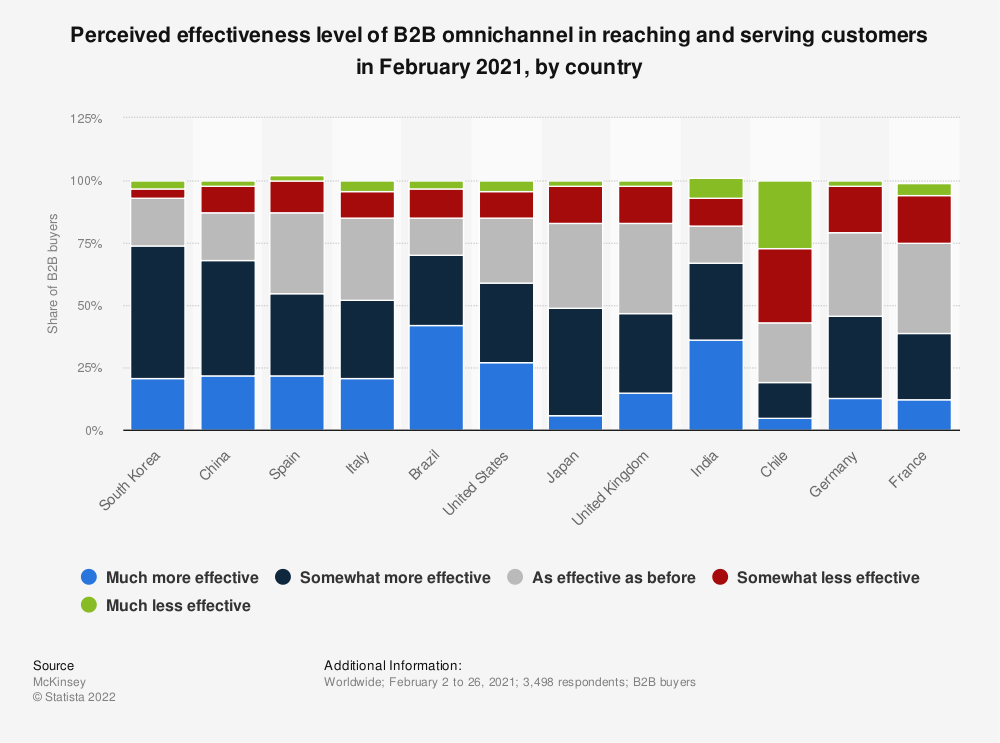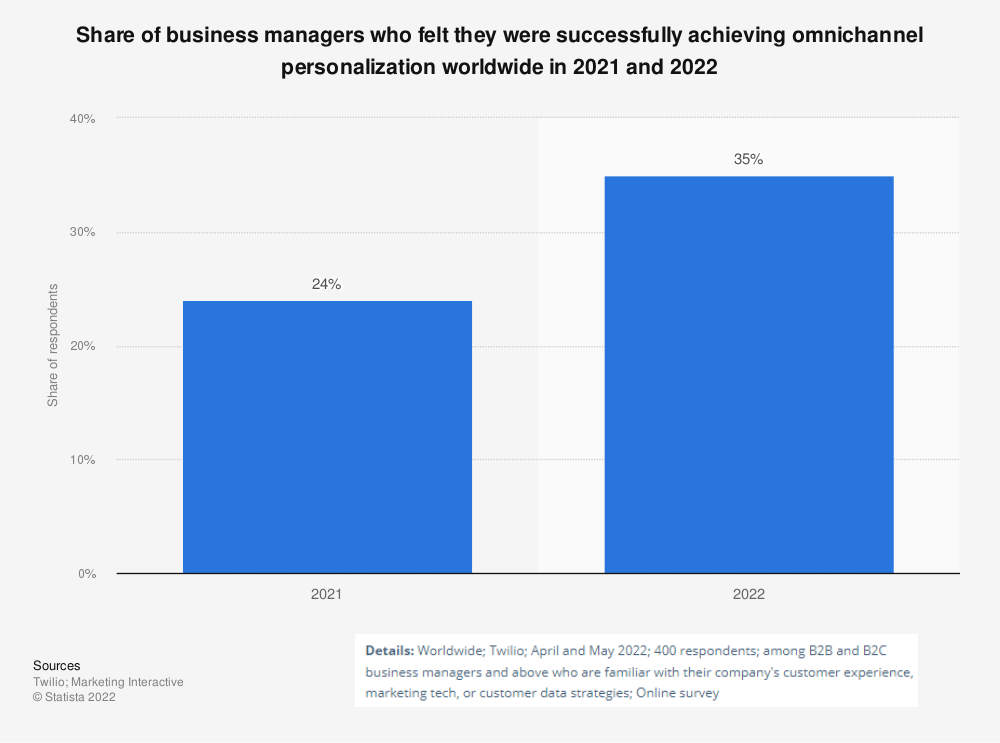SEO Tips for E-commerce: Improve Your Online Shop's Ranking in Google
SEO is an important tool for e-commerce businesses to bring in new customers. Here are the best tips for your online shop to rank higher in Google.

Omni-channel is a term you've probably heard before, but what does it mean exactly? And how is it different than multi-channel? In this article, you will read about the advantages, disadvantages, pitfalls and a step-by-step plan for implementing an omni-channel strategy in your e-commerce business.
Table of Contents
An omni-channel experience refers to an integrated, well-structured, and consistent customer experience throughout all the possible channels that a customer engages with a business.
In other words, it means that no matter how a customer interacts with your brand (physical shop, website, app, etc.), the experience is very consistent.
In essence, the omni-channel strategy takes the multi-channel experience one step further.
So, what exactly is the difference between omni-channel and multi-channel?
With a multi-channel experience, customers can choose between a few channels that are not directly aligned with each other. The company decides for the customer which channel best suits the customer experience.
Omni-channel, on the other hand, allows the customer to use many different channels that are well coordinated. Here, the customer decides what channel to use.
The idea of an omni-channel strategy is that the customer is at the centre and can choose which channels and media they want to use. This applies in B2C as well as in B2B.
With an omni-channel strategy, all the information about the product is the same throughout the channels, whether in the physical store, the online shop, app or advertisement. The customer has the possibility to pick up the product in the store, order it to the store, or have it delivered to their home. Returns and payment options should also be the same everywhere.
At the end of the day, the customer should be able to visit any channel (or multiple channels) and the information and experiences should be fluid and consistent.
As multi-channel and omni-channel are very similar, it can be a bit unclear what the differences are. To emphasise the difference between the two, let’s look at an example for each:
A customer wants to buy a pair of trousers online and uses the app on their phone to have a look at the online shop. They decide they want additional information, so they go to the website. However, the price in the website is different than in the app.
Another example would be if the customer decides to go to the physical shop, the same price as in the app is offered. However, if they want to return the trousers, the conditions are different than in the app. Each channel is to some degree independent from the others.
Now, imagine a customer who wants to buy trousers sees an ad for them on Facebook. They click on the ad and end up in the online shop.
The customer can immediately say whether they want to pick up the trousers in the shop or have it delivered to their home. The return options are also directly pointed out. Through a chat function in the app, they can ask questions about the product and find the same information again.

Shutterstock/PopTika
The bottom line with an omni-channel strategy is that the customer should have an extremely smooth interaction with your physical and online shop, as the same information is displayed everywhere.
Nowadays, customers no longer see a channel or medium, but they see the brand or company they are in contact with. All (social) media channels overlap so that consumers no longer distinguish between the different channels. As a shop owner, this is what you should be aiming for.
It takes a lot of time and effort to set up an omni-channel experience, but is it worth it? Here are some advantages of the omni-channel strategy.
If the right channels are used for the right target group, consumers can use the channel they prefer. In addition, the fact that you have a physical and an online presence gives your company a “face” and creates consumer confidence.
This fluid experience gives customers a deeper, more satisfied connection with the brand, which should boost customer loyalty. By now, you should know that keeping existing customers is always easier and cheaper (and therefore, more efficient!) than attracting new customers.
Companies with a strong omni-channel strategy retain an average of 89% of their customers. The average customer retention rate is 39%, so that is a significant increase.
A survey by Accenture shows that 75% of B2B customers will make a follow-up purchase from the same provider if it performs well in omni-channel.
When we look at the perceived effectiveness from the business side of things, here is a survey conducted by Statista in 2021:

Source: Statista
B2B decision makers see the implementation of an omni-channel strategy as being quite effective. In fact, in almost every country, more than half of those surveyed felt that omni-channel implementation was at least somewhat more effective, if not much more effective.
Customers can go to the physical store with their products that they purchased online and return them there. In many cases, this saves time for the customer. If it's convenient or urgent, they at least have the option to exchange items in person and they won't have to wait for the new product to arrive.
This flexibility will add to customer satisfaction and can also help boost sales as foot traffic to your physical shop increases as well.
On a side note, having in-store returns can be considered better for the environment.
Because the product information is displayed throughout multiple channels, consumers are more inclined to actually buy the product. Shoppers get a certain feeling of trust when they know any channel can be used to buy a product and know they are getting the same deal wherever they choose to go.
To give you a clear overview of the omni-channel strategy, we should also look at a number of disadvantages that you have to take into account if you’re considering implementing this strategy.
Mobile phones are still often seen as a threat to shop owners.
A lot of work is done on showrooming, which means that the customer will look at the product in the physical shop and then search for it online to maybe find it at a lower price.
This can be detrimental to your physical shop. Try to reverse this mobile phone trend so it becomes a positive medium for you. You can, for example, add QR codes to your shelves and shop windows. This way, these shoppers are sent directly to your website and don’t end up "somewhere else" while standing in the middle of your shop.
This can also be seen as a way of boosting transparency, another trust-builder.
Implementing an omni-channel strategy means that you will have to make some changes within your organisational structure.
Most companies have a traditional marketing department and a separate online marketing department. Similarly, your mobile support may come from the development department rather than the customer support team.
Working this way within your company is difficult if you want to implement an omni-channel retail strategy.

Shutterstock/sirtravelalot
It often happens that these departments work separately from each other and therefore the different channels "stand alone" (this would be a multi-channel experience and not omni-channel).
A better solution would be to have a branding team that takes care of all offline and online branding and positioning.
In addition to that, there should be a sales team that is responsible for the customer journey and the coordination of the different channels. The disadvantage of this is that you have to make room for it and invest time and money in it.
In the following chart, you can see that the implementation of an omni-channel strategy can be difficult to implement. However, the data also shows us that more and more companies are moving in this direction and seeing more success:

Source: Statista
Now that you know the important things about omni-channel retail, all you have to do is start with it!
But how do you do that?
Implementing an omni-channel strategy can’t be done overnight, so set small goals. Make these goals specific and measurable so you can always track your progress and how close you are to reaching the ultimate goal.
Omni-channel retail only works really well when you know who to focus on. Find out who your target group is and where they are located.
Create a customer persona to help you. Once you really know who your customer is, you can make the customer journey more personal and customer-oriented.
Now that you know who your potential customers are, it is important to map out the customer journey.
Some questions to ask yourself during this journey are:
Determine which channels you want to implement and set them up in such a way that they appeal to the target group. Ideally, all of your channels will be optimised at some point. The key is prioritisation.
For example, if your target group is young, then prioritise your Instagram shop (if you have one). Is your demographic more of a "mom" audience? Get on Pinterest!
Now that everything is up and running, it is important to continue to measure and develop the results. You have to keep up with the market and make sure you stay up-to-date.
Some quick tips to apply omni-channel to your business:
Now that you know what omni-channel is and how to get started with your online shop, it's important to know some of the pitfalls before you start implementing your new strategy. Take the time to set up each relevant channel properly, so you get the best results.
In an era where offline and online worlds merge, customers are looking for an experience where these two worlds work flawlessly together. The omni-channel experience offers the customer a smooth, personalised experience that ensures more customer loyalty and higher conversions.
Although it may take a lot of time and effort to make your brand completely omni-channel, it’s definitely worth it.
This article was translated from our Dutch blog: Wat is Omnichannel? - De voordelen, nadelen en valkuilen
07/11/22SEO is an important tool for e-commerce businesses to bring in new customers. Here are the best tips for your online shop to rank higher in Google.
Valentine's Day has grown in popularity across Europe. We're sharing some romantic statistics (redundant, right?) and look at 9 marketing tips for V-day.